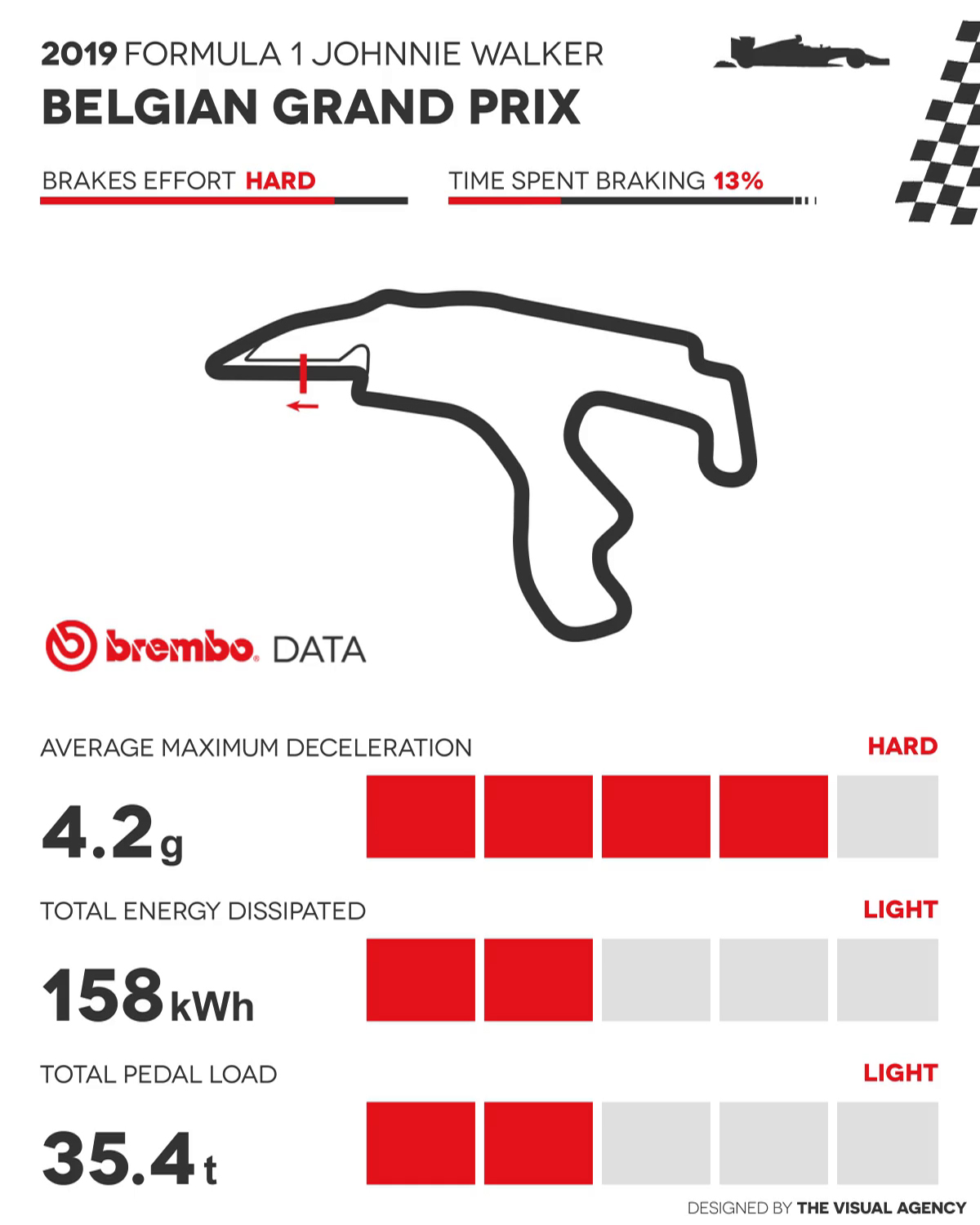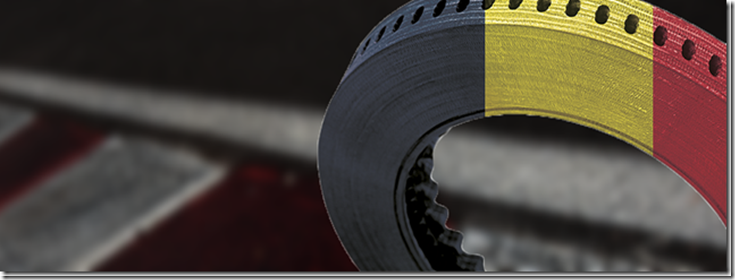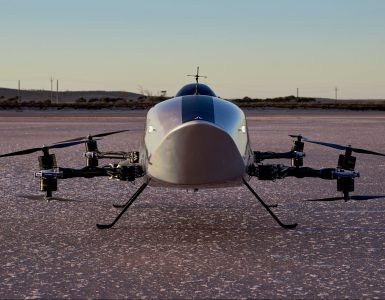With several fast sections interrupted by a number of challenging corners including the famous ‘Bus Stop’, the iconic Spa-Francorchamps circuit in Belgium represents another tough challenge for a Formula One car’s brakes.
Indeed, according to official F1 brake supplier Brembo, the Circuit de Spa-Francorchamps is recognised as one of the most demanding on the calendar in terms of brake wear. On a scale of 1 to 5, it has earned a ‘4’ on the difficulty index.
The brakes are immediately tested into Turn 1, cars having to decelerate from a top speed of 303 km/h (188 mph) to just 85 km/h (53 mph) in a matter of seconds. And it’s not easy on the drivers either, who will experience a load of 171 kg (377 lbs) when they stamp on the brakes, equating to 5.3 G in deceleration.
Yet this isn’t the biggest test of man and machine over the longest circuit on the F1 calendar, the toughest test of the car’s braking system occurring at Turn 18. Here, the single-seaters will arrive at 321 km/h (199 mph) and decelerate to 91 km/h (57 mph) in just 128 meters (420 feet). Although the drivers only need to brake for 2.71 seconds, they will certainly feel the force of that moment with a sharp deceleration of 5.8 G exerted on their bodies.
Although the brakes are used for just over 13 seconds per lap, (13% of the race), by the end of 44 of these laps, high energy forces allied to the notoriously adverse weather conditions in the Ardennes means that problems connected to excessive cooling can occur.
It all adds up to make the Belgian Grand Prix one of the toughest of tests and one of the most exciting of races on the F1 calendar.





